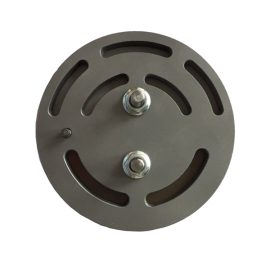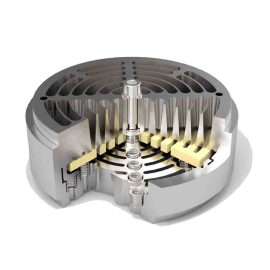Damper Plate
1. Vibration Absorption:
Damper plates help to absorb and dampen vibrations that occur during the operation of machinery. This is particularly important in systems with rotating or reciprocating parts, where vibrations can lead to noise, wear, and mechanical failure.
2. Shock Absorption:
These plates also absorb shocks that can occur due to sudden changes in load or impact forces. By absorbing these shocks, damper plates help to protect the machinery and its components from damage.
3. Torsional Damping:
In systems with rotating components, torsional vibrations (twisting oscillations) can occur. Damper plates help to dampen these torsional vibrations, ensuring smoother and more stable operation.
4. Noise Reduction:
By absorbing vibrations and shocks, damper plates contribute to the reduction of noise generated by the machinery, leading to quieter operation.
Construction and Materials
Material:
Damper plates are typically made from materials that have high damping properties, such as rubber, elastomers, or composite materials. These materials can effectively absorb and dissipate kinetic energy from vibrations.
Design:
The design of a damper plate can vary, but it generally includes a combination of flexible and rigid elements to achieve the desired damping effect. It might be integrated into other components of the compressor, such as the coupling or mounting systems, to provide a holistic vibration damping solution.
Importance in Compressor Damper Plate
Operational Efficiency:
Reducing vibrations not only minimizes wear and tear on the compressor but also helps maintain operational efficiency. Vibrations can cause misalignment and additional friction, which can lead to inefficiencies.
Safety:
Excessive vibrations can lead to mechanical failures that might pose safety hazards. By mitigating vibrations, the damper plate contributes to the safe operation of the compressor.
Compliance with Standards:
In many industries, there are regulations and standards regarding acceptable levels of noise and vibration. A damper plate helps ensure that the compressor operates within these limits.
Compressor damper plate is an essential component designed to reduce vibrations and noise, protect the compressor’s internal components, and ensure efficient and safe operation. Made from materials with high damping properties, these plates are crucial in maintaining the longevity and reliability of reciprocating compressors across various applications.









